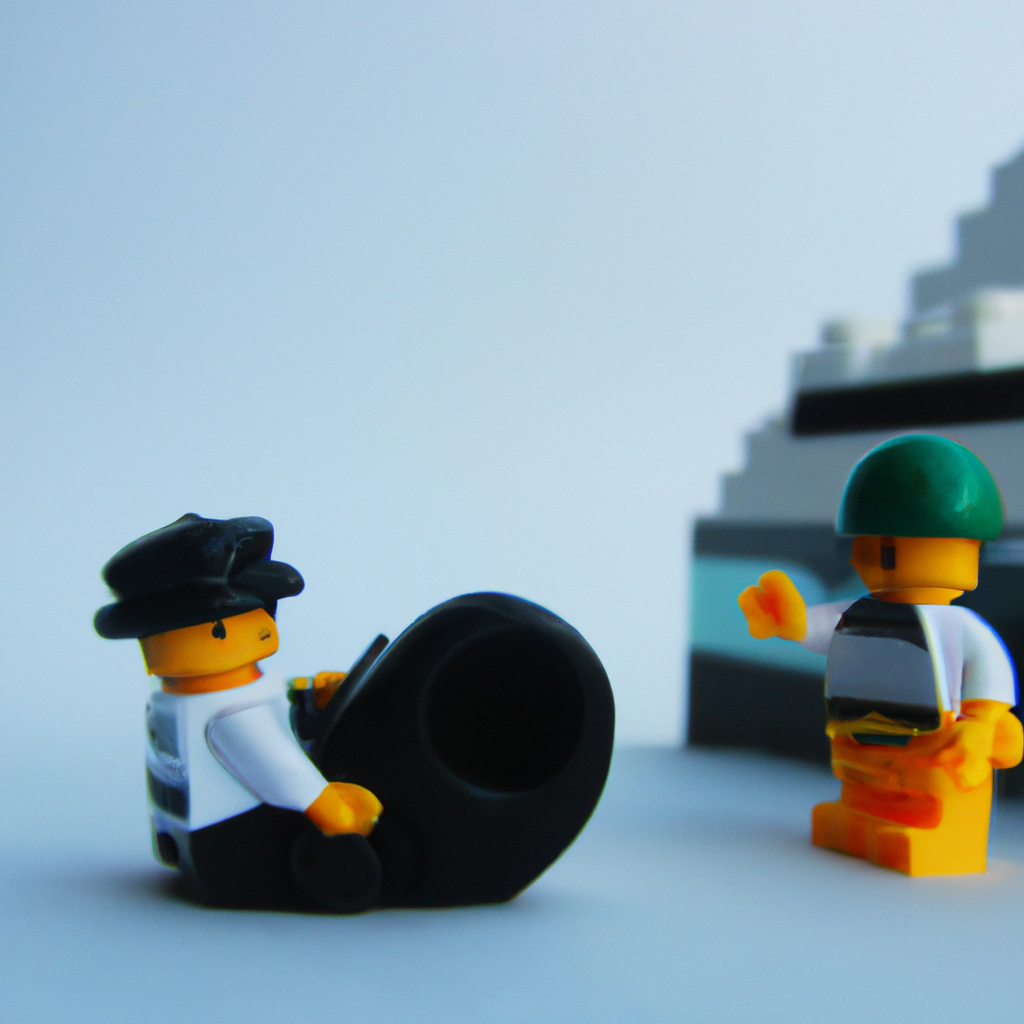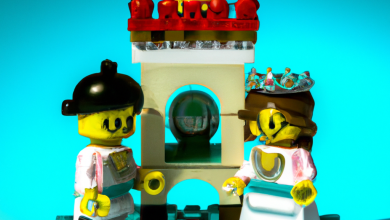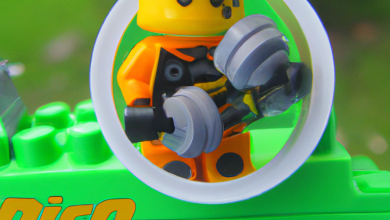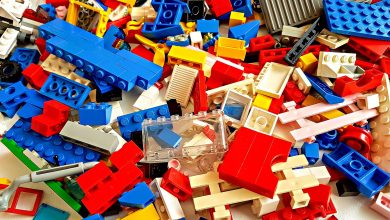
I. Introduction
Lego has been a part of the toy industry for almost a century, and it has been providing almost endless possibilities for children to be creative and imaginative for generations. Ole Kirk Christiansen, a carpenter from Denmark, founded Lego in 1932. He started by making wooden toys for children, but it wasn’t until 1949 when he created his iconic interlocking plastic bricks. The word “Lego” is derived from the Danish words “leg godt,” which translates to “play well.”
While Lego toys have been around for decades, their popularity has not waned, and in fact, has only increased over time. Today, Lego is the world’s largest manufacturer of construction toys, with billions of bricks produced every year. The reasons for their continued success are multifold. Most notably, Lego has always prioritized quality, and as such, their toys can withstand years of use and abuse. Additionally, with the sheer number of sets available, Lego has something for everyone, whether it’s young children just starting out or adults looking for more complex models to build.
Furthermore, Lego has been innovative in creating themed sets based on popular movies, TV shows, and even video games. By partnering with big names such as Star Wars, Harry Potter, and Marvel, among others, Lego has been able to reach a broader demographic and expand its market. This has resulted in even more imagination and creativity being sparked in all ages.
Lego has also been committed to incorporating modern technology into its products while keeping the classic bricks that have made them famous still around in the modern-day world. One example of this is the Lego Boost set which includes motors and sensors to create moving and automated models. Alongside, technology has enabled Lego to design digital models, making room for endless possibilities and innovations.
In conclusion, Lego toys have proved to be timeless, and their popularity has only increased with time. Their commitment to quality, innovation, and partnerships with big names have made them a household name, with billions of sets sold worldwide. Lego’s timeless goal is to continuously create opportunities for children to innovate and explore their imaginations.

II. The Benefits of Playing with Lego Toys
Playing with Lego toys is not only a fun activity, but it also has numerous benefits for children of all ages. Let’s take a closer look at the benefits of playing with Lego toys.
Firstly, playing with Lego sets helps in the development of fine motor skills. When children use their fingers to pick up and connect Lego bricks, they are practicing dexterity, hand-eye coordination, and the development of both hands. The small size of the blocks makes it necessary for children to use their fingers in a precise way, which ultimately helps in strengthening their fine motor skills.
Secondly, Lego sets promote creativity and innovation. Playing with Lego sparks the imagination, encouraging children to build and create their own designs. Kids learn to think out of the box, and they can create almost anything they can imagine from the blocks that they have. By exploring building with different colors, designs, and possibilities, children are able to think critically and learn different ways of looking at and solving problems.
Lastly, playing with Lego sets helps in improving problem-solving skills. Through the process of building with Lego bricks, children learn how to solve problems on their own. Building requires logical thinking, planning and execution, and it challenges children to think creatively and strategically. When children encounter obstacles during their building process, it prompts them to think logically and adapt their design to overcome those problems.
In conclusion, playing with Lego toys offers numerous benefits to children, including the development of fine motor skills, the fostering of creativity and innovation, and improving problem-solving skills. Building with Lego sets encourages children to explore and discover, think critically and promotes their confidence by giving them an outlet to explore their ideas in a fun and imaginative way. Children not only learn through fun and interactive play, but they also develop long-lasting skills that will benefit them throughout their lifetime.
III. Different Types of Lego Sets
Lego offers a wide range of sets to cater to different interests and age groups. Here are the different types of Lego sets you can find on the market:
1. Classic Lego sets: These Lego sets are standard building sets that allow the user to create whatever they want. Classic sets come in different sizes and colors, but they all consist of basic bricks, plates, and other functional shapes. With the freedom to build anything from scratch, classic Lego sets can cultivate imagination and creativity among children and adults alike.
2. Themed sets: Many Lego sets are designed with specific themes, such as space exploration, medieval castles, pirates, or even popular movies like Star Wars or Harry Potter. These sets come with specific bricks, minifigures, and sometimes even moving features, like a working light saber or a spinning Ferris wheel. Themed sets provide a more structured experience that may appeal to kids who prefer a particular style of play.
3. Licensed sets: These sets are designed in collaboration with other popular franchises like Marvel, DC, Disney, and more. Licensed sets provide users with the opportunity to build their favorite movie, TV show, or comic book characters and scenes from scratch. With detailed designs and characters that users may already be familiar with, these sets have become increasingly popular among both children and adults alike.
Each of these different Lego sets offer unique play experiences that can appeal to different personalities and skill sets. That being said, while each set may serve a specific function, it doesn’t necessarily mean that Lego play is limited to just one type or another. Lego sets can be mixed and matched, providing endless possibilities for imaginative and inventive creations.
Overall, whether working with classic sets, exploring themed kits, or constructing licensed scenes, the world of Lego offers a multitude of options in which you can experiment and let your creativity run wild.
IV. Building with Lego
Lego is all about building and creating using the building blocks provided. Whether you prefer to follow step-by-step instructions or like to create your own designs, Lego provides endless opportunities for building and creating. In this section, we will explore the differences between following instructions and free-building, as well as some tips and tricks for building more complex creations.
Instructions vs. Free-Building
Lego sets come with step-by-step instructions for building a specific design. Following instructions can be a great way for beginners to learn how to use the blocks and create something specific. Instructions also allow for consistency across sets, allowing children to build the same set multiple times or rebuild a set they may have taken apart.
However, for more experienced builders or those looking to unleash their creativity, free-building is the way to go. Free-building means creating something entirely from scratch without using instructions. This can be a more challenging way to build with Lego, but it allows for endless possibilities for designs and creations.
Tips and Tricks for Building More Complex Creations
Building complex designs with Lego can be a challenge, but there are a few tricks to make it easier.
1. Start Small: Begin with a smaller design, and then work your way up to larger and more complicated builds.
2. Plan Ahead: Before beginning a big build, plan out the design and the blocks you will use in advance.
3. Use Unique Pieces: Experiment with unique Lego pieces to add variety and complexity to your designs.
4. Include Details: Details can bring your creation to life, from adding windows and doors to incorporating mini-figures and accessories.
5. Don’t be Afraid to Disassemble: If a build isn’t working out, don’t be afraid to take it apart and start over. Sometimes it’s just a matter of finding the right design.
Conclusion
Lego sets provide a variety of building possibilities, from following instructions to free-building. Either way, building with Lego can be a fun and satisfying experience. With a little creativity and planning, anyone can build more complex and intricate creations.
V. The Lego Community
Lego is more than just a toy – it’s also a community of builders, collectors, and enthusiasts. Bonding over the love of Lego, fans have formed groups, clubs, and events all around the world. From local meetups to international conventions, there is an entire community dedicated to celebrating Lego and its endless possibilities.
Networking through Lego
Through Lego clubs and events, fans can connect with like-minded individuals, make friends, and collaborate on projects. Lego fans take networking seriously and it is a great way to build relationships with people with similar interests.
Major Lego events
Some of the most popular events in the Lego community include Brickworld, Bricks by the Bay, and BrickUniverse. Brickworld, for instance, is an annual convention that takes place in Chicago and attracts thousands of attendees from all over the world. The event features massive Lego displays, competitions, and workshops. Similarly, Bricks by the Bay is an annual event held in the San Francisco Bay area, and it features jaw-dropping Lego creations, video games, and storytelling. There are also annual international Lego festivals, such as Japan Brickfest, which holds events in different cities across the country each year.
Online Lego communities
The passion for Lego also extends to online communities where like-minded fans can connect and collaborate worldwide. Websites like Lego.com, Reddit, BrickLink, and Rebrickable provide a platform for fans to showcase their work, collaborate, offer ideas or thoughts, and participate in virtual building contests. Some of these communities are also known to host global contests to showcase creativity and innovation through Lego-building.
In conclusion, Lego is more than just toys; it is a community. Through Lego-related events, enthusiasts and hobbyists network with each other and share their passion. Online platforms offer a vast array of space where they can show off their creativity, connect with others, and participate in competitions. The Lego community is diverse and inclusive, existing in real-life and online, and it continues to grow daily.
VI. The Future of Lego
As technology advances, so do the possibilities for Lego sets. One exciting area of development is the use of augmented reality, which allows users to see a 3D projection of their Lego creation in real-time on a tablet or phone. This technology not only enhances the building experience but also opens up a whole new world of creative possibilities.
Another exciting advancement is the use of coding in Lego sets. The Lego Boost line, for example, encourages children to combine physical construction with coding, allowing them to program their creations to move and interact with the environment. This not only introduces children to basic coding concepts but also reinforces the value of combining physical and digital play.
Lego has also been making strides in environmental sustainability in recent years. The company has pledged to use sustainable materials in its products by 2030 and has already made some changes. For example, in 2018, Lego introduced its first line of eco-friendly bricks made from sugarcane-based plastic. These new bricks have the same quality standards as traditional Lego bricks but with a lower carbon footprint.
In addition to sustainable materials, Lego is also focused on reducing waste. The company has introduced a recycling program in which users can send back their old bricks to be reused or recycled. This not only reduces waste but also provides an opportunity for Lego enthusiasts to give back to their favorite toy company.
Overall, the future of Lego is bright and full of exciting possibilities. With advancements in technology and a commitment to sustainability, Lego is sure to continue to provide endless hours of creative play for generations to come.
VII. Conclusion
Lego toys have been a beloved childhood staple for many generations and their popularity shows no signs of slowing down. In this article, we explored the benefits of playing with Lego toys, the different types of Lego sets available, building with Lego, the Lego community, and the future of Lego.
Playing with Lego toys does not only provide entertainment, but it also promotes the development of fine motor skills, sparks creativity and imagination, and hones problem-solving skills. Children can learn to follow instructions and build pre-designed sets, or they can freely create their own designs from scratch.
The variety of Lego sets available is incredible. From classic sets that allow children to unleash their creativity, to themed and licensed sets which allow them to build their favorite characters and worlds from movies, TV shows, and video games. This has made Lego toys an increasingly popular choice for children of all ages.
Building with Lego can be both challenging and rewarding, and there are various ways to approach it. Some children follow instructions precisely, learning to build their sets step by step. Others prefer to build and create without any instruction, using their imagination to design their unique creations. For those looking for a greater challenge, there are various tips and tricks available for building more complex structures.
The Lego community is extensive, with numerous events and online communities that allow enthusiasts of all ages to share their love of Lego. One of the most well-known events is Lego Fest, where people can see impressive Lego creations, participate in building challenges, and enjoy various Lego-themed activities. There are also several online communities, including social media groups, where people can exchange ideas, share their creations, and connect with other Lego enthusiasts.
As Lego continues to evolve, technological advancements will provide more possibilities for building and design, making Lego an even more engaging and interactive toy. Additionally, as environmental concerns continue to grow, Lego is making strides to minimize their negative impact on the environment by using more sustainable materials in their production and packaging.
In conclusion, Lego toys are more than just a toy. They promote children’s mental and physical development, inspire creativity and innovation, and foster problem-solving skills. Whether building pre-designed sets or creating something entirely unique, Lego provides a fun and engaging way for children (and adults) to express themselves and connect with others who share their passion for building and design.



